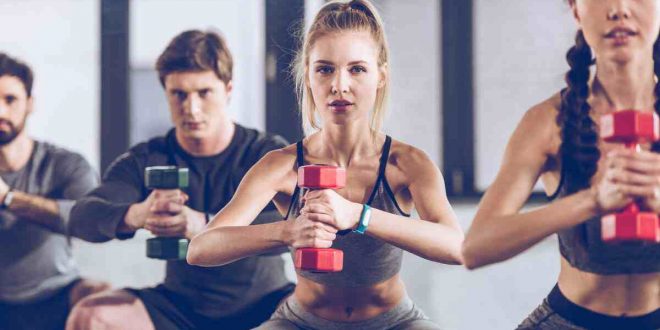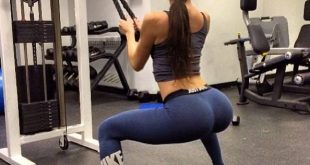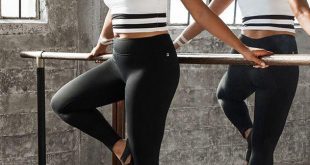Introduction
Fitness equipment plays a vital role in helping individuals achieve their fitness goals. However, with the abundance of options available, it can be overwhelming to determine which equipment is best suited for your needs and how to use them correctly. In this article, we will analyze some of the most common fitness equipment found in gyms and home setups, providing valuable insights into their benefits and the proper techniques for using them. By understanding the correct use of these equipment, you can maximize your workout efficiency and minimize the risk of injury.
- Treadmill: Cardio Conditioning and Endurance
The treadmill is a staple piece of cardio equipment that allows individuals to perform walking, jogging, or running exercises indoors. It provides an excellent cardiovascular workout, improving heart health and boosting endurance. When using a treadmill, ensure that you start with a warm-up at a slower pace before gradually increasing the speed and incline. Maintain good posture, engage your core, and land softly on your feet to reduce impact on your joints. Remember to cool down and stretch after your workout.
- Stationary Bike: Low-Impact Cardiovascular Training
The stationary bike offers a low-impact alternative to traditional cycling and is ideal for individuals with joint issues or those seeking a lower-intensity cardio workout. Adjust the seat height and position according to your comfort level, ensuring proper alignment of your knees and hips. Pedal with a smooth and controlled motion, maintaining a steady cadence and adjusting resistance levels as needed. Engage your core and avoid excessive leaning on the handlebars to maximize the engagement of your leg muscles.
- Dumbbells: Versatile Strength Training Tools
Dumbbells are versatile free weights used for various strength training exercises, targeting different muscle groups. They come in a range of weights, allowing individuals of all fitness levels to customize their workouts. When using dumbbells, maintain proper form and alignment, ensuring a stable grip. Start with lighter weights and gradually progress to heavier ones as your strength improves. Perform exercises such as bicep curls, shoulder presses, lunges, and squats, focusing on controlled movements and avoiding excessive swinging.
- Barbell: Compound Lifts for Strength and Power
The barbell is a long metal bar with adjustable weights attached to each end. It is primarily used for compound exercises like deadlifts, squats, and bench presses, which engage multiple muscle groups simultaneously. When using a barbell, ensure that the weights are securely fastened and the bar is held with a firm grip. Maintain proper form by keeping your back straight, knees aligned, and core engaged. Start with lighter weights until you have mastered the correct technique, then gradually increase the load as your strength progresses.
- Resistance Bands: Portable and Versatile Training Tools
Resistance bands provide a portable and affordable alternative to traditional weightlifting equipment. They come in various resistance levels, making them suitable for individuals of all fitness levels. Resistance bands can be used to target specific muscle groups, such as the glutes, shoulders, or arms. Secure the band in place and perform exercises like bicep curls, lateral raises, or hip abductions, maintaining tension throughout the movement. As you gain strength, progress to higher resistance bands for more challenging workouts.
- Stability Ball: Core Strengthening and Balance Training
Stability balls, also known as Swiss balls or exercise balls, are large inflatable balls used for core strengthening and balance training. When using a stability ball, make sure it is properly inflated and choose the appropriate size based on your height. Engage your core muscles to maintain stability while performing exercises like crunches, planks, or balance exercises. Start with basic movements and progress to more advanced exercises as your stability and balance improve.
- TRX Suspension Trainer: Full-Body Strength and Stability
The TRX suspension trainer is a versatile piece of equipment that uses adjustable straps and handles to provide a full-body workout using bodyweight resistance. It improves strength, stability, and flexibility. When using the TRX suspension trainer, ensure that it is securely attached to a stable anchor point. Adjust the straps to the desired length and perform exercises like rows, lunges, or push-ups, focusing on controlled movements and maintaining proper form.
- Kettlebells: Functional Training and Power Development
Kettlebells are cast iron weights with a handle, designed for dynamic and functional exercises that target multiple muscle groups simultaneously. They are excellent for developing power, strength, and cardiovascular fitness. When using kettlebells, start with lighter weights and gradually progress to heavier ones as your technique and strength improve. Perform exercises like kettlebell swings, goblet squats, or Turkish get-ups with proper form, ensuring a strong grip and engaging your core throughout the movements.
Conclusion
Understanding how to use common fitness equipment correctly is essential for optimizing your workouts and minimizing the risk of injury. Whether you prefer gym-based exercises or home workouts, these analysis and guidelines will help you make informed decisions when selecting and using fitness equipment. Remember to always prioritize safety and proper form, gradually progressing in intensity and weight as your fitness level improves.
By incorporating a variety of equipment into your workout routine, you can target different muscle groups, improve cardiovascular fitness, and enhance overall strength and stability. Whether you choose to use treadmills, stationary bikes, dumbbells, barbells, resistance bands, stability balls, TRX suspension trainers, kettlebells, or any other equipment, ensure that you understand their purpose and correct usage.
Additionally, it is crucial to seek guidance from qualified professionals, such as personal trainers or fitness instructors, who can provide proper instruction and guidance on using the equipment effectively. They can also assist in designing a personalized workout program that aligns with your goals and abilities.
Lastly, always listen to your body and adjust your workouts accordingly. If you experience pain or discomfort while using certain equipment, consult a healthcare professional to rule out any underlying issues. Remember that consistency, along with proper technique and adequate rest, is key to achieving long-term fitness success.
In conclusion, understanding the benefits and correct usage of common fitness equipment is essential for maximizing your workout efficiency and minimizing the risk of injury. By incorporating a variety of equipment into your routine, seeking professional guidance when needed, and listening to your body, you can embark on a safe and effective fitness journey. Enjoy the process and reap the rewards of a healthier and stronger body.
 Live Health Guide–Home
Live Health Guide–Home




